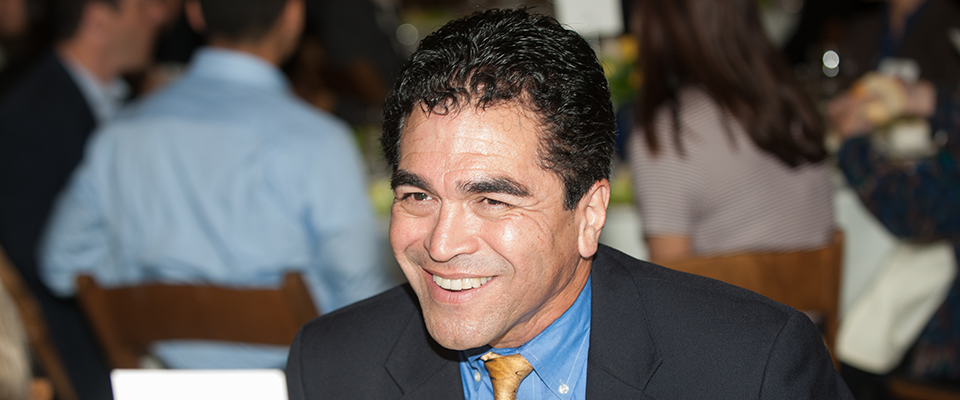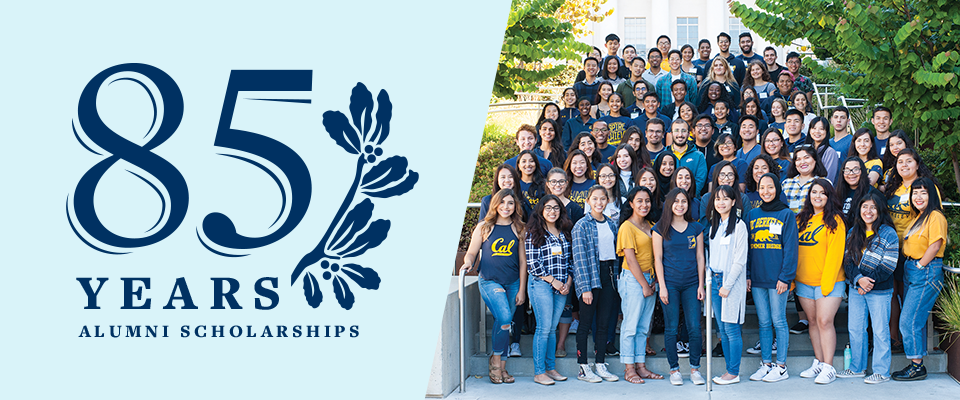In the spring of 1998, when a Cal Alumni Association (CAA) task force was charged with putting together what would become The Achievement Award Program (TAAP), the general parameters of the endeavor were clear: establish a scholarship program for high-achieving students from low-income communities in California. But there remained the daunting task of working out the program’s details and implementing it.
The original components of The Achievement Award Program established by the task force have remained remarkably constant to this day. Some of the program’s intangibles—in particular, its close-knit culture of shared experiences and bonding—also characterize the program today.

As TAAP’s first assistant program manager, Elizabeth Ramirez ’05 says that TAAP was always meant to be much more than a scholarship program. (Elizabeth would serve as TAAP’s program director until 2005.)“The program originally was envisioned to be an all-encompassing service program,” Elizabeth says. “It was not just supposed to be just a check. When [students] came onto campus, we were here to greet [them]. We had a mentorship program, we had retreats, we had meetings, and we had an outreach program that the scholars created out on their own. Each cohort came on as one, but they became a whole—TAAP was like a family.”
“What have you overcome? What’s your story, what drives you contribute to campus and in the community?”
The first TAAP staff members didn’t have much time to get the program up and running. From the board meeting in late 1997 when Chancellor Robert Berdahl floated the idea of a scholarship for first-generation, low-income students to the moment the first cohort stepped on campus in fall 1999, CAA needed to explore the program’s viability, develop its components, hire staff, conduct outreach to high school students, interview prospective TAAP scholars, and select the first cohort.
“We definitely were learning on the fly,” says Ramirez, who today works as a program manager for an information security lab. “These are first-generation students like I was, and this program is brand new—we were trying to figure things out [as a staff], but also we were figuring things out with them.
“I think one of the things that we tried to do from the start was to incorporate the students into the process, and have them teach us as well. What did they need? We were always trying to make sure that whatever we were doing, it was for them, not a directive from above.”
The Criteria
Over the years, the criteria originally established for the selection process has remained largely consistent. TAAP seeks academically qualified, incoming first-year students from low-income, historically marginalized communities. The vast majority of those selected are the first in their family to attend college. The average annual family income of TAAP scholars today is $22,998.
The selection committee seeks students who have overcome significant personal or academic barriers in their lives. They look for students who are interested in contributing on- and off-campus, demonstrating leadership and the importance of going to college.
“The academics weren’t necessarily what we were looking for [as all the finalists met the university’s academic standards]. It was more ‘What have you overcome?’” says Ramirez. “‘What’s your story, what drives you contribute to campus and in the community?’”
The Selection Process
The TAAP team didn’t know what to expect when it began spreading the word to outreach programs affiliated with or recognized by UC Berkeley (such as Upward Bound, Puente, and EAOP, the university-sponsored Early Academic Outreach Program). Nor did the team know how many high school seniors would apply. The staff was astonished, says Ramirez, when 1,500 applications poured in for just 15 spots. Those 1,500 were whittled down to 200 applicants, who were interviewed in person by alumni across the state.

“Then the decision became agonizing,” Ramirez says. “There were so many qualified students we had to turn down.”
Over time, as outreach programs spread word about TAAP around the state, the application pool grew to 8,000–9,000 applications a year, says Joani Carpenter ’67. Carpenter was formerly CAA’s director of stewardship and scholarships, and worked closely with TAAP.
The number of students accepted into TAAP annually soon increased from 15 to 25. The number held steady until the 2018–2019 academic year, when it increased to 49, largely as a result of one gift from Mary Mills Tuncer ’63. For the 2019–2020 school year, 40 scholars received the award, thanks to another donation from Tuncer.
Program Components
The features of the TAAP program today haven’t changed from 20 years ago. Scholars receive an annual stipend—initially $5,700, today $6,000—and a laptop, and are provided with a dedicated advisor. When they graduate, they are gifted CAA Life Membership, a license plate frame, and a TAAP stole.
All scholars begin their Cal career at orientation, where they meet their fellow TAAP scholars and learn the basics of the program and how to navigate the UC Berkeley campus. As first-generation college students, most TAAP scholars do not have parents or older siblings to advise them about how to make the most of their college experience.
The scholars are required to attend weekly workshops on topics such as accessing campus resources and managing finances, and meet at least once a semester with a CAA staff member to make sure they are on track academically and personally. In reality, says Ramirez, the staff would have more frequent, informal check-ins with scholars, as many struggled to balance academics with demands of families that depend on them financially and/or emotionally.

Scholars are required to attend events and meet with their donors. Often, donors and students develop strong relationships that last beyond the students’ time at Cal.
Lastly, all TAAP scholars have to fulfill a community service requirement. (Today, that’s a minimum of 10 hours of service per semester.) In the early years of TAAP, most of the scholars participated in a program called I AM: “I Am Intelligent, I Am Aware, and I Am Motivated to Go to College.” The scholars worked with students at Carter Middle School in Oakland. “The scholars spent thousands of hours working with the students, resulting in the students’ improved test scores,” says Carpenter.
Today, the scholars have a wider array of volunteer options. Many choose to serve as mentors to first- and second-year students through the Alumni Scholars Program’s peer mentorship program, or pursue a passion and find their own volunteer activity on or off campus.
The TAAP Culture
From the start, TAAP developed a unique culture. The scholars tended to depend on each other for support and became close friends. They also bonded with the staff.
“I know that these TAAP scholars will continue to make Cal proud.” — Elizabeth Ramirez ’05
“It was really cool because we had a whole floor over at the Y—TAAP’s first offices were in the YWCA on Bancroft Ave,” says Ramirez. “So students could come in at any time and talk to any of us. They would always drop in. It was awesome. Even if they didn’t feel the need to talk to us, they were welcome to just hang out to study, or chat.”
Ramirez, like many TAAP alumni, uses the word “family” to describe the culture of TAAP. “It felt that way from the very beginning,” she says. “I think all of the scholars appreciated that, and they treated themselves as family supporting each other.”
The Outcome
TAAP scholars, from the inaugural incoming class in 1999 to today, have a key common denominator: a history of success. Over the years, Carpenter says the graduation rate for TAAP scholars has been high—very close to the graduation rate for UC Berkeley overall—and significantly higher than the rate for the same population profile nationally. “This is because of one factor: the program component,” says Carpenter.
TAAP scholars have gone on to accomplish a great deal; they are university professors, tech company founders, and nonprofit leaders.
“I think it’s really exciting to see all of the different and amazing things that they’re doing,” says Ramirez, “They’re filmmakers, they’re artists, they’re actors, they run programs, they’ve created their own nonprofits—the list is endless! It’s also amazing how many of them give back to their community and to Cal. I know that these TAAP scholars will continue to make Cal proud.”
Read stories of TAAP scholars from the past 20 years: alumni.berkeley.edu/taap20stories




















